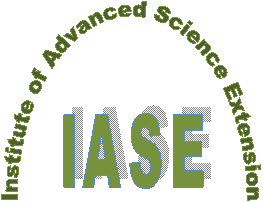International
ADVANCED AND APPLIED SCIENCES
EISSN: 2313-3724, Print ISSN:2313-626X
Frequency: 12
![]()
Volume 6, Issue 5 (May 2019), Pages: 67-69
----------------------------------------------
Technical Note
Title: Mathematical analysis of the queuing system and application
Author(s): Sheila A. Bishop 1, *, Kanayo S. Eke 1, Michael C. Agarana 1, 2, Mary O. Olanrewaju 1
Affiliation(s):
1Department of Mathematics, Covenant University, Ota, Ogun State, Nigeria
2Department of Mathematical Engineering Science, University of Johannesburg, Johannesburg, South Africa
* Corresponding Author.
 Corresponding author's ORCID profile: https://orcid.org/0000-0001-5348-5265
Corresponding author's ORCID profile: https://orcid.org/0000-0001-5348-5265
Digital Object Identifier:
https://doi.org/10.21833/ijaas.2019.05.011
Abstract:
The mathematical study of waiting lines is mainly concerned with queue performance measures where several applications have been drawn in past studies. This work studies the mathematical analysis of queuing models formed from observed data of a shopping mall checkout service unit. The efficiency of the models in terms of utilization and waiting length is carried out by administering questionnaires so as to rate the system performance. The results show that the inconsistency of the arrival and service process is a major cause for needless long queues formed.
© 2019 The Authors. Published by IASE.
This is an
Keywords: Queuing models, Analysis of queues, Sales checkout, Waiting time, Service time
Article History: Received 25 November 2018, Received in revised form 10 March 2019, Accepted 19 March 2019
Acknowledgement:
The authors would like to appreciate the management of Covenant University for the financial support given to them for the completion of this work. We sincerely appreciate the management of the shopping mall for allowing us to carry out this survey.
Compliance with ethical standards
Conflict of interest: The authors declare that they have no conflict of interest.
Citation:
Bishop SA, Eke KS, and Agarana MC et al. (2019). Mathematical analysis of the queuing system and application. International Journal of Advanced and Applied Sciences, 6(5): 67-69
Figures
Tables
No Table
----------------------------------------------
References (9)
- Aradhye A and Kallurkar S (2014). Application of queuing theory to reduce waiting period of pilgrim. International Journal of Innovative Research in Science, Engineering and Technology, 3(10): 16775-16781. [Google Scholar]
- Augustine A (2013). Queuing model as a technique of queue solution in Nigeria banking industry. Developing Country Studies, 3(8): 188-195. [Google Scholar]
- Bajpai P (2013). Measure of performance of queuing models and behavior of customers in real life applications. International Journal of Applied Physics and Mathematics, 3(5): 359-363. https://doi.org/10.7763/IJAPM.2013.V3.236 [Google Scholar]
- Bishop SA, Okagbue HI, Oguntunde PE, Opanuga AA, and Odetunmibi O (2018). Survey dataset on analysis of queues in some selected banks in Ogun State, Nigeria. Data in Brief: 19: 835-841. https://doi.org/10.1016/j.dib.2018.05.101 [Google Scholar] PMid:29900379 PMCid:PMC5997939
- Boucher JP and Couture-Piché G (2015). Modeling the number of insureds’ cars using queuing theory. Insurance: Mathematics and Economics, 64: 67-76. https://doi.org/10.1016/j.insmatheco.2015.04.008 [Google Scholar]
- Erlang AK (1909). The theory of probabilities and telephone conversations. Nyt Tidsskrift Matematik, 20: 33-39. [Google Scholar]
- Patel JJ, Chaudhary RM, and Makwana P (2012). Analysis of the sales checkout operation in big bazar using queuing simulation. In the International Conference on Management, Humanity and Economics, Phuket, Thailand: 81-86.
- Priyangika JSKC and Cooray TMJA (2016). Analysis of the sales checkout operation in supermarket using queuing theory. Universal Journal of Management, 4(7): 393-396. https://doi.org/10.13189/ujm.2016.040703 [Google Scholar]
- Rafaeli A, Barron G, and Haber K (2002). The effects of queue structure on attitudes. Journal of Service Research, 5(2): 125-139. https://doi.org/10.1177/109467002237492 [Google Scholar]

